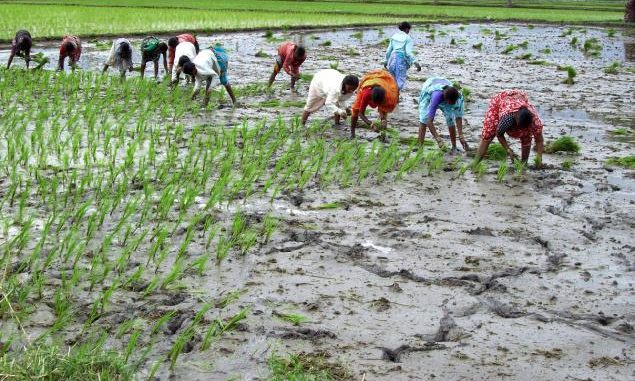
The NDA’s Startup India scheme, which has a Rs10,000 crore war chest managed by the Small Industries Development Bank of India, is seeking to incubate farm-solution startups through a contest called Agriculture Grand Challenge.
New Delhi: Could startups solve complex issues in India’s agriculture sector, which supports 49% of the workforce? The agriculture ministry thinks so and is hunting for “commercially viable” proposals in 12 pre-identified areas.
The Narendra Modi government’s Startup India scheme, which has a Rs10,000 crore war chest managed by the Small Industries Development Bank of India (Sidbi), is seeking to incubate farm-solution startups through a contest called Agriculture Grand Challenge.
“I urge young entrepreneurs to participate in our newly launched Agriculture Grand Challenge and join forces to make agrarian sector technologically sound and commercially viable,” farm minister Radha Mohan Singh said. The idea is to enable entrepreneurship and innovation, he said.
A handful of startups for the rural economy are already a part of the growing ecosystem. India has more than 19,000 startups, led by consumer Internet and financial services apps, according to the Economic Survey 2015-16.
From 220 in 2014, the number of startups funded in the first 10 months of 2017 stood at 482, according to data from Tracxn.
As of December 2015, eight Indian startups belonged to the so-called Unicorn category, a club of ventures valued at $1 billion or more. Yet, fewer than 10% of these cater to the farm or social sector, according to Tracxn.
A government document, which Hindustan Times has reviewed, states that private-sector startups could offer viable interventions in an array of areas, notably linking farmers to markets and offering extension services. It seeks to rev up an emerging niche area that’s being dubbed as farming as a service, or FAAS.
Proposals are being invited for simplified, sensor-based quick testing of soil samples as well as real-time assaying and grading of food commodities in electronically linked eNAM markets. The government has linked 470 mandis electronically but many of them lack crucial infrastructure: food labs to test samples being brought to these markets. The prospective app should preferably enable sample tests under two minutes to promote online trade.
The government is interested in apps to connect food processors with “agripreneurs” and growers, an official said. To help price discovery, the ministry is looking at price forecast apps for pulses, oilseeds, potato, onion and tomato at the time of sowing since these crop are vulnerable to price volatility.
According to the document, the success of the Pradhan Mantri Fasal Bima Yojana, India’s main farm insurance scheme, depends on accurate yield estimates at village and farm levels for which it wants to incubate digital technologies.
Another priority area is custom hiring of farm machinery and cheaper disposal of crop residue that has become a major reason for pollution in the national capital from neighbouring states during winters.
Under the programme, commercially viable ideas will be incubated at the government’s expense for three months. The last date for applications is January 15, 2018.
“Given the high penetration of Internet-enabled mobile phones, this is a good idea that can drive down cultivation costs,” said Ashok Duggal, one of the promoters of VentureIndia Labs.
A crop of startups aimed at harnessing the rural economy has made inroads already. AgroStar, a Pune-based mobile-commerce firm, directly sells farm inputs to farmers in Maharashtra and has raised more than $4 million. Farmers need to give a missed call to access its services.
EM3, another firm, offers farm-labour services at Rs 2,000 an acre of wheat, which it claims is half of what it normally costs during peak season.
The government document said it would prefer solutions that are scalable and can reach small farmers.
The average size of farm holdings is 1.15 hectares. This means nearly 85% farmers are “small and marginal”. India has 120 million agricultural land holdings.
Source: Hindustan Times

Leave a Reply